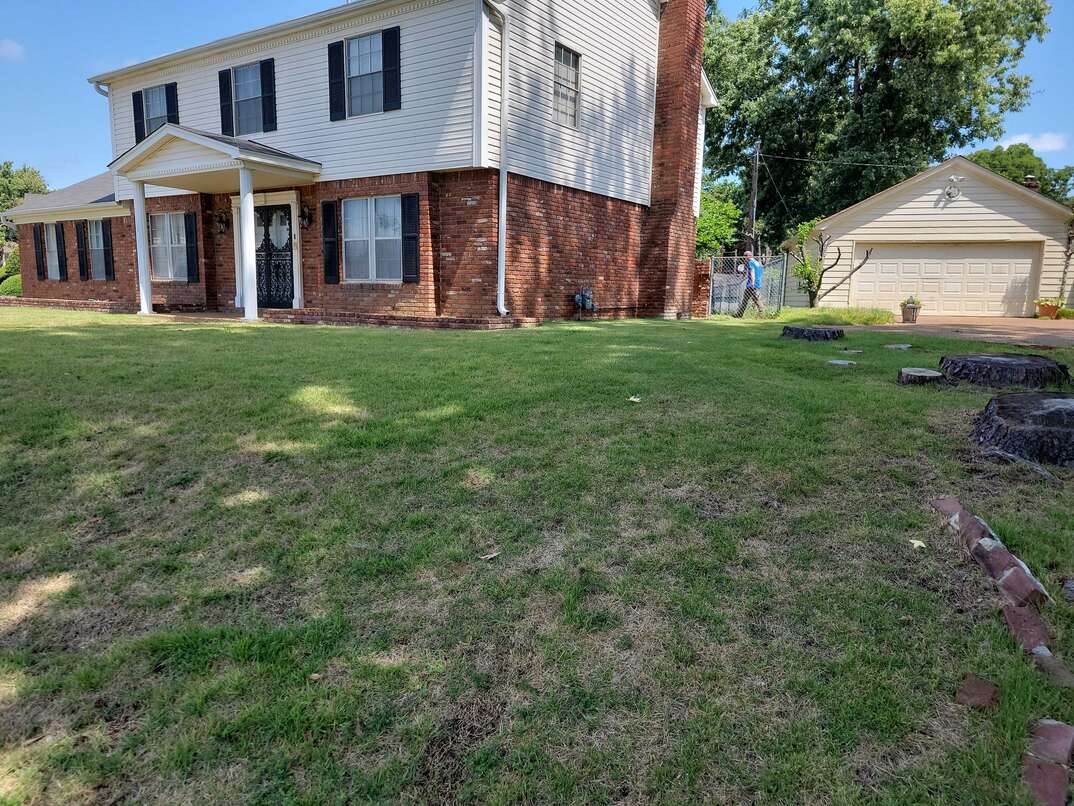- AppliancesElectriciansHVACLandscapingLocksmithPest ControlPlumbingRenovationRoofingT V RepairAll Home Improvement
- Car AccidentClass ActionCorporate LawCriminal DefenseDivorce LawEmployment LawFamily LawFinancial LawLegal AidMedical Injury LawyersMedical MalpracticeReal Estate LawWater Fire RestorationAll Legal
- InvestmentRetirementAll Finance
- Animal InsuranceAutoGeneral InsuranceHealth PolicyHome RentersAll Insurance
- DentalHealth SpecialistsAll Medical
- Animal CareVeterinaryAll Pets
- Auto GlassTowingAll Automotive
Common Lawn Diseases and How to Treat Them

Are your dreams of a perfectly manicured lawn being crushed by lawn diseases? A lawn fungus can discolor and kill your grass, leaving it looking patchy and unhealthy.
Read More Lawn and Landscaping Articles
Lawn disease causes can vary, from weather conditions to lawn care routine. Check out these common lawn diseases to help identify the issues with your yard and ways to fix them.
Lawn diseases can vary based on where you live and the environmental conditions in your yard. With that in mind, these five common lawn diseases could be standing between you and a perfectly lush, green lawn.
1. Powdery Mildew
Caused by a lawn fungus, powdery mildew can affect grass and several other plants. It shows up as a white dust-like covering on your grass. Eventually, it can cause the grass blades to turn yellow and brown before thinning and dying. Kentucky bluegrass and other cool-season grasses are more susceptible to this lawn disease. You'll often find it in shady areas, when the humidity is high or if there's poor air circulation.
To treat powdery mildew, try increasing sunlight to the area by trimming overhanging branches or plants. Cutting back thick greenery in the area can also improve air circulation. If you need chemical treatment options, look for fungicides with myclobutanil, propiconazole or triadimefon to help get rid of the lawn fungus.
2. Brown Patch
If your lawn suffers from brown patch, you'll see circular or irregular patches that turn brown and range in size from a few inches to a few feet wide. If you take a closer look at the grass blades, you might notice irregular lesions on them. Commonly affecting perennial ryegrass and tall fescue, this lawn disease usually happens when the forecast is hot and humid for an extended period, making it more common later in the summer. It can also happen if you use too much nitrogen in your fertilizing routine or if you water your lawn too much.
You can prevent and control brown patch by aerating and dethatching your lawn, ideally in spring. Cut back on your fertilizing and use a balanced fertilizer to avoid too much nitrogen. You might also need to change your lawn watering habits. Water in the morning to give the grass blades time to dry, and only irrigate when you're getting less than an inch of rain per week.
Lawn fungicide is also an option. Apply the fungicide according to the product instructions, using a spot-treatment approach only to the areas that need it.
3. Snow Molds
Pink and gray aren't the typical colors you think of when it comes to snow, but those are the options for snow molds that affect your lawn. This lawn fungus starts in the winter, especially if the ground is covered in snow when it's not frozen. You see the results in early spring with matted, circular patches of whitish-gray or whitish-pink areas. Gray mold affects just the leaves. Pink snow mold can affect the roots as well.
You might not need to do anything to cure snow mold, as it usually clears up on its own. If you have gray snow mold, it usually dies when your area warms up to 45 degrees F. Pink mold usually needs a little more time, usually dying off at around 60 degrees F. You can also help by raking the affected areas and overseeding them to encourage new growth.
- Spring Lawn Maintenance: 7 Tasks for Your To-Do List
- 6 Ways to Conserve Water Without Sacrificing Your Lawn
- How Much Will You Pay for Lawn Care Services?
- Everything You Need to Know About Lawn Aeration
- 11 Ways to Bring a Damaged Lawn Back to Life
4. Red Thread
Like other common lawn diseases, red thread can cause irregular patches in your lawn. They're usually beige and can range from inches to feet in diameter. What makes this lawn disease unique is the red filaments that look like thread that you'll see in the grass blades. You might notice the reddish hue when the grass is wet. It's more common during cool, wet periods and typically affects Kentucky bluegrass, perennial ryegrass and fine fescue grasses.
Since red thread can happen due to low nitrogen, fertilizing to keep nitrogen levels high enough can help. You can minimize the spread by mowing your healthy grass first and collecting the lawn clippings. If it doesn't clear up on its own, you can apply lawn fungicide according to the instructions.
5. Dollar Spot
Dollar spot usually happens when humidity is high and nitrogen is low. It appears as small brown circles in your yard that can often grow together, creating irregular shapes. The grass blades can have light spots with a reddish-brown tint.
Fertilizing the lawn to maintain adequate nitrogen can help. Maintain the grass, but avoid mowing it too low. Deep, less frequent irrigation can also help. If the issue isn't resolved, lawn fungicide is an option.
Elocal Editorial Content is for educational and entertainment purposes only. Editorial Content should not be used as a substitute for advice from a licensed professional in your state reviewing your issue. Systems, equipment, issues and circumstances vary. Follow the manufacturer's safety precautions. The opinions, beliefs and viewpoints expressed by the eLocal Editorial Team and other third-party content providers do not necessarily reflect the opinions, beliefs and viewpoints of eLocal or its affiliate companies. Use of the Blog is subject to the
Website Terms and Conditions.The eLocal Editorial Team operates independently of eLocal USA's marketing and sales decisions.

